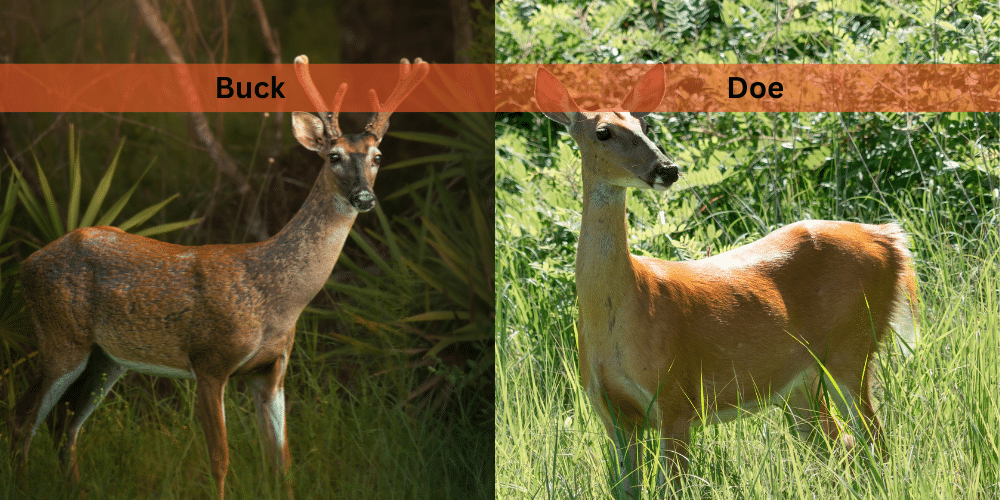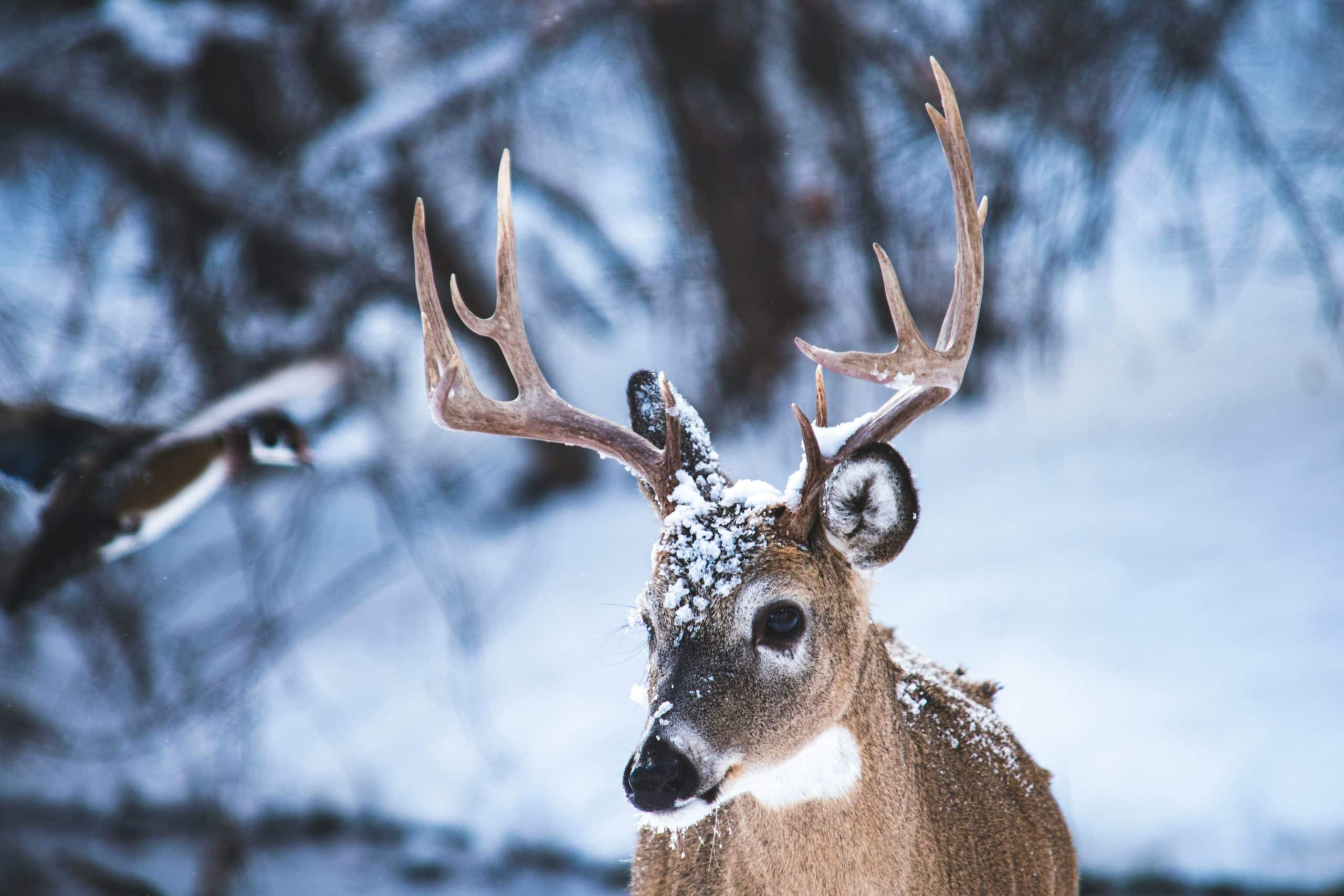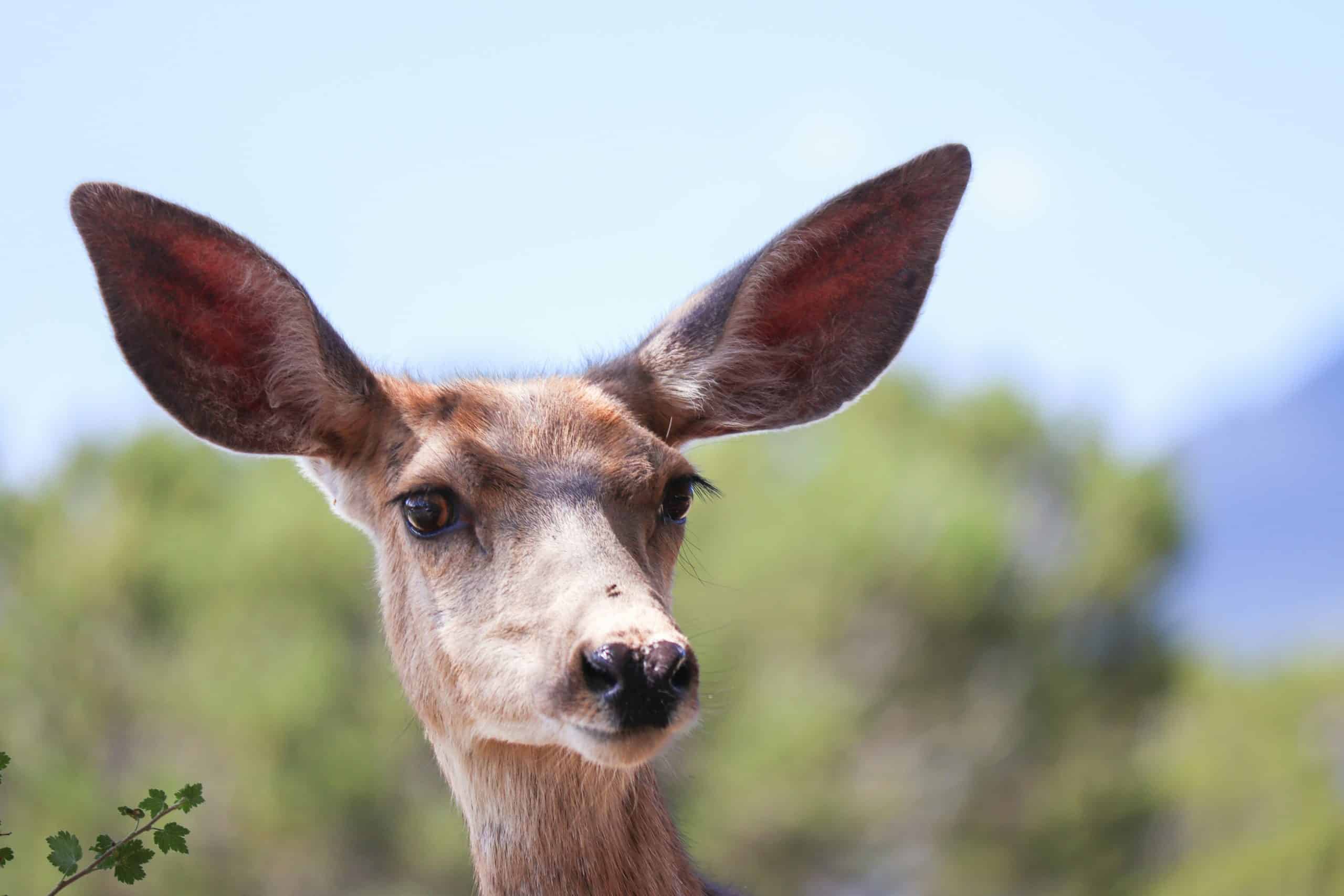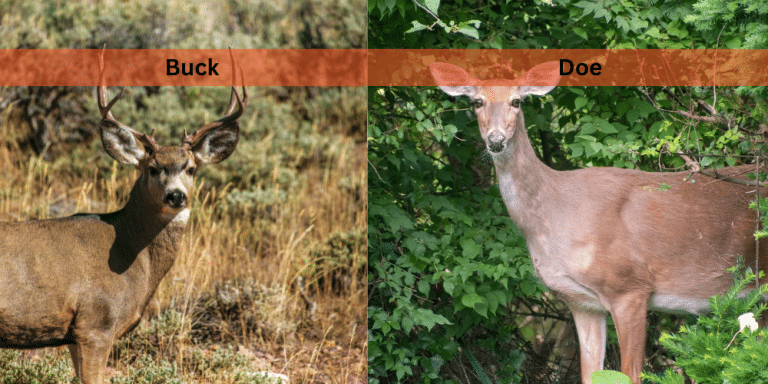If you’re not 100% confident in what you’re looking at, that’s a problem. Not only because you’re letting opportunities walk by due to uncertainty but you might also take down the wrong type of deer.
Knowing the difference between a buck vs a doe isn’t just about following the rules. It’s about being a responsible hunter who can make quick, accurate decisions in the field. Whether you’re sitting in a tree stand at dawn or following fresh tracks through the snow, you need to identify your target with certainty. Let me walk you through exactly how to do that.
The Antlers
Let’s start with the obvious one. Bucks grow antlers, does don’t. Easy, right?
Not always. From mid-spring through winter, mature bucks (anything over a year and a half) will sport some form of noticeable antlers. The size and shape vary wildly based on age, genetics, and what they’re eating. You might see a spike, a massive eight-pointer, or anything in between.
But here’s where it gets tricky. Button bucks—those yearling males—have antlers that barely break the skin’s surface. They look like small bumps or “buttons” on top of the head, and if you’re not paying attention, you’ll mistake them for does every time.

Does almost never grow antlers. There are rare exceptions caused by hormonal imbalances or injury, but even then, the antlers stay small and don’t shed their velvet properly. Most states have smartly labeled tags as “antlerless” instead of “doe only” to account for button bucks.
If you’re hunting late season and spot a deer without antlers, don’t assume it’s a doe just yet. Bucks shed their antlers in winter when testosterone levels drop with decreasing daylight. A freshly shed buck will have bloody pedicles (the spots where antlers attach to the skull) just above the ears, though these scab over quickly.
Body Shape and Head
Even without antlers, a buck looks like a buck. You just need to know what you’re looking for.
Body Build
Bucks are built like linebackers. They’ve got heavier frames, thicker necks, and broader shoulders that give them a stocky, muscular appearance. A mature female vs male deer comparison shows that does are more slender and streamlined—almost rectangular in profile. Button bucks fall somewhere in between, appearing squarish compared to the doe’s leaner build.
Late-season bucks lose weight after the rut, but they still maintain that bulky structure. Pay attention to the chest and brisket area. Bucks have a noticeably larger, more pronounced brisket that hangs lower.
The Head and Face
This is where you can really dial in your ID skills. A buck’s head is blockier and more pronounced, with a flattened forehead. Think of it as more angular and masculine.
A doe’s head is rounder on top with a narrower face. I always tell people it looks like an old glass Coke bottle—smooth curves with floppy ears. Button bucks have shorter snouts than does but retain that flattened forehead you see on mature bucks.
Neck Thickness
During the rut, a buck’s neck can swell by 50%. I’m not exaggerating—they look like they’ve been hitting the gym hard. Even outside breeding season, their necks stay thick and powerful-looking. Does have longer, more graceful necks that blend smoothly into their shoulders. If you see a deer with a neck that looks too thick for its body, you’re probably looking at a buck.

Buck vs Doe Behaviors
How deer act tells you almost as much as how they look.
Button bucks are bold. They’ll walk into food plots and respond to calls without much hesitation because they haven’t learned to be cautious yet. They lack the experience that teaches older deer to pause, scan for danger, and move carefully. Adult deer—both buck and doe—will stand at the edge of a field for several moments, looking around before committing.
Does travel in family groups most of the time. You’ll see them moving together, grazing together, bedding near each other. It’s a social thing. Button bucks often travel alone or pair up with another young, non-breeding male. Late-season mature bucks are typically solo.
After the physically draining rut, breeder bucks need calories desperately. If you see a large deer feeding alone in your plot at last light during late season, don’t automatically assume it’s a doe just because you don’t see antlers. Could be a buck that’s already shed.
Buck Tracks vs Doe Tracks
This is where tracking gets really interesting. Once you learn to read tracks, you can identify deer you’ve never even seen.
Size and Splay
Buck tracks vs doe tracks come down to a few key differences. Mature bucks over 200 pounds have front hooves that splay apart under their weight. I measure tracks with my fingers—a “four finger” track usually indicates a buck that’ll dress over 200 pounds.
Be careful though. All deer have splayed tracks when they’re running, so you need to look at walking tracks to make an accurate call. Check the edges of the track too. Fresh tracks have sharp, defined cuts in the soil. Older tracks show rounded edges where weather has worn them down.
Front vs. Rear
A buck’s front tracks are noticeably larger than his rear tracks and sink deeper because of the heavy front-end weight. Does have more balanced proportions.
Here’s a neat trick: Look at how the rear tracks fall in relation to the front ones. A buck has a large chest and narrow rear, so his rear tracks fall slightly inside of his front tracks. The gap between left and right rear tracks is narrower than the front track gap.
A doe has a narrow chest and slightly wider rear in comparison, so her rear tracks fall slightly outside of her front tracks. The rear track gap is wider than the front gap. Younger deer generally step with their hind feet directly into their front tracks.
Reading Track Age
Learning to age tracks helps you know if you’re following something fresh or wasting your time. Look at the definition—can you see fine lines around the pad? Are the edges sharp or weathered? Check the small chunks of broken dirt. Are they moist, sun-dried, or cemented back to the ground?
Fresh tracks in muddy fields might have debris displaced around them, with soil chunks that still hold their original shape. After a couple days, those chunks stick to the ground underneath. Touch them gently with your finger to test.
Unique Characteristics
This is advanced stuff, but it’s worth learning. Individual bucks have unique tracks just like they have unique antlers. Some tracks are short and wide, others long and skinny. Older bucks sometimes develop permanent splay from years of carrying weight. You’ll see chips missing from hooves, tips that hook inward or outward in different directions.
If you’re serious about tracking specific bucks, take photos of their tracks. Study both left and right hooves since they often don’t match each other.

Practical Tips for the Field
Patience is your best friend. Use your rifle scope or binoculars to really study the deer before you shoot. When possible, wait until several deer are grouped together—then you can identify and harvest the largest antlerless deer in the bunch.
Check tarsal glands if you’re close enough. These are the hairy tufts on the inside of the hind legs. Bucks, especially during the rut, rub-urinate on these glands frequently, staining them dark brown. Does and button bucks have lighter, less noticeable tarsal glands.
Don’t rush your shot. It’s better to pass on a questionable opportunity than to mistakenly take a button buck or, worse, break hunting regulations. I’ve watched deer for ten minutes before pulling the trigger, and it’s always worth the wait.
Study tracks in areas where you won’t be hunting to avoid leaving scent near your stands. Visit muddy fields after rain and photograph tracks over several days to see how they age. This homework pays off when you’re tracking in real hunting situations.
Final Thoughts
Learning to identify buck and doe comes down to practice and patience. The antlers are the easiest giveaway, but body shape, behavior, and especially tracks all tell you what you’re looking at.
Start by studying deer whenever you can—not just during hunting season. Watch them in fields, observe their movements, and pay attention to how they carry themselves. Take photos of tracks and compare them over time. The more you train your eye, the faster and more confident you’ll become at making that critical identification.
Remember: there’s no shame in passing on a shot if you’re not certain. That’s what separates good hunters from great ones. Know your target, respect the animal, and you’ll never have to worry about making the wrong call in the field.
Per our affiliate disclosure, we may earn revenue from the products available on this page.




